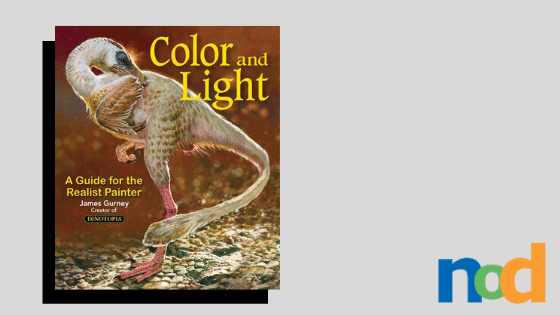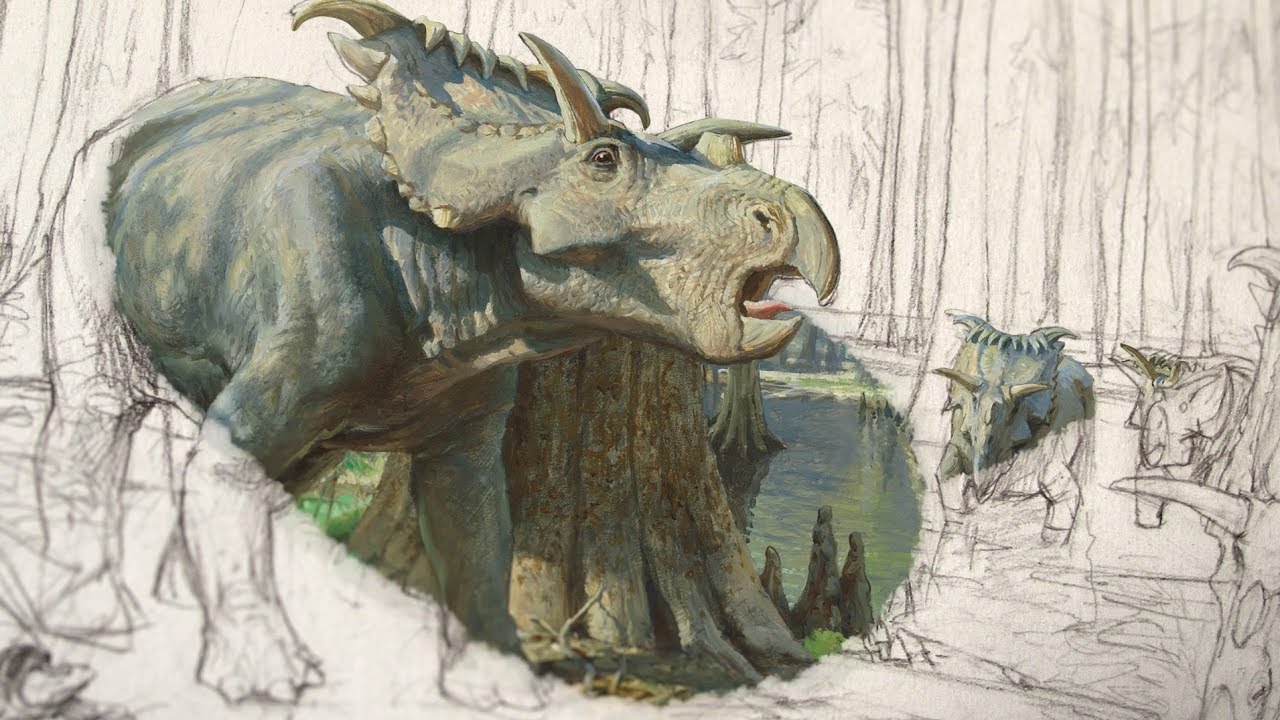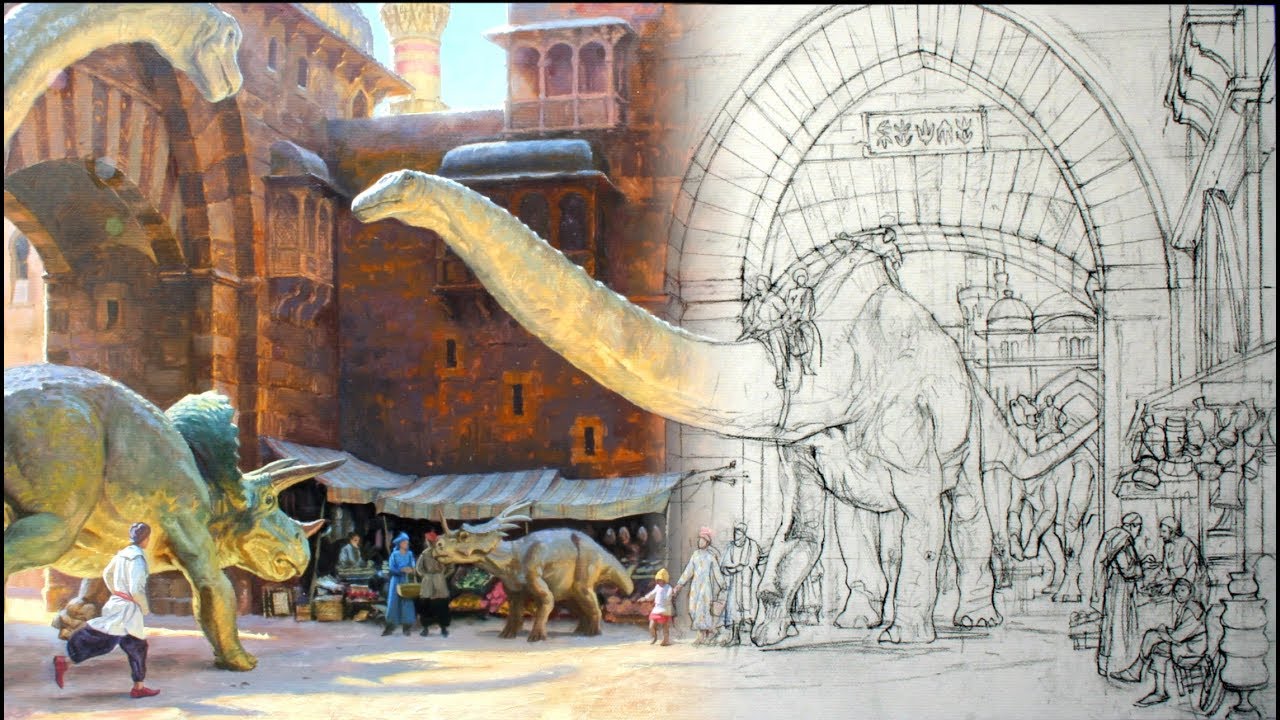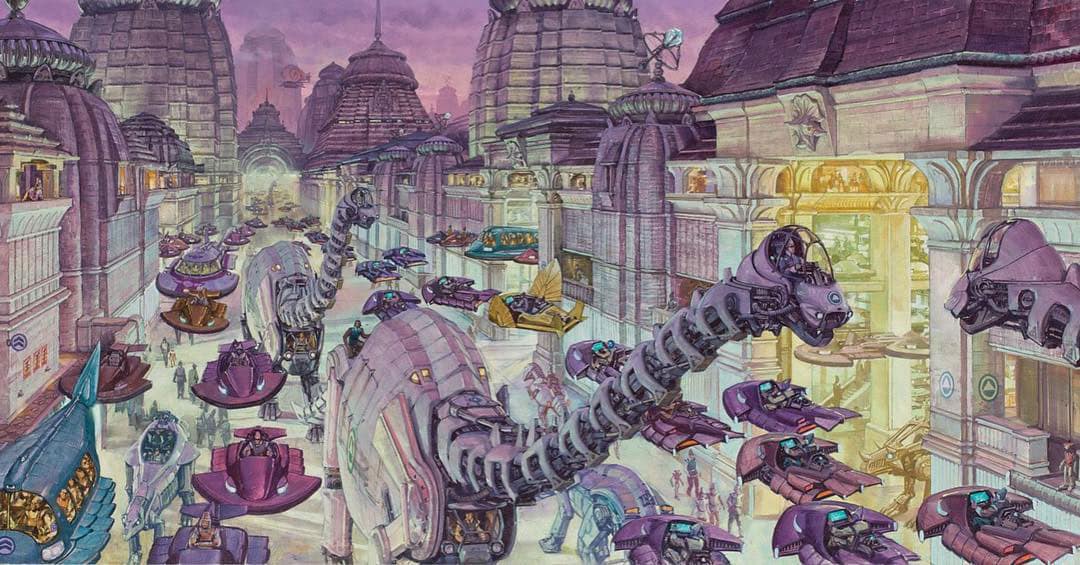Print Picks: Color and Light by James Gurney
by Taylor Slattery | June 5, 2020

In elementary school, when it was time to draw, I remember everyone would dig through the big box of crayons in search of that one skin-colored crayon. It was that one warm, fleshy orangish pink that was the only crayon even remotely close to human flesh. Granted, its color was a bit of an oversimplification and didn’t do the complexities of real human skin justice. But then again, neither did our stick figures.
The problem persists when you’re older and decide to take the subject of painting seriously. In regards to color, it can be hard to figure out what separates your work from that of a professional. Why is it the masters can so effectively depict a moonlit scene or the warm, translucent glow of an ear caught in the sun? Why do their colors look so right while mine look so wrong? Individually, the colors they’ve chosen don’t even make sense. Looking at my skin, I can’t detect any green, but in the context of this painting, It just works.

To describe the special alchemy at play in the color selection of a master as elusive is an understatement. If you have a keen eye, you can do studies of master’s works to see where they’ve placed different colors and hope to gain some sort of insight into their thought process. However, for those just getting started, this might lead to more questions than answers. If only these people were still around to teach us.
What if I told you there’s a living master of color and light? What if I also told you he’s incredibly generous with his time? What if I told you he’s on Instagram? Then I could only be talking about one person. James Gurney.

James is perhaps most well-known for Dinotopia, a series he wrote and illustrated in the 90s. The series later grew to feature over 20 different titles, adaptations for film and tv, and a few video games. Within the art world, however, James is best-known for his command over color and lighting. You could say he wrote the book on the matter, because, in fact, he did.
Color and Light by James Gurney is an invaluable resource to any beginning artist, and one book that seems to be a part of every professional artist’s library. The text demystifies color in a way that’s easy to understand and immediately applicable in one’s own work.

In the book, James begins by explaining how lighting communicates form, using a variety of different lighting scenarios and light sources as examples. He then thoroughly examines color, giving readers a framework through which they make future decisions. Finally, he explains how restraint is a good thing and how it contributes to style and mood.
Like that peach colored crayon, this summary is an oversimplification of this book. There are many gems and aha moments to be found. The clarity and confidence gained from its contents make this book a must have for any level artist. It’s a book you’re guaranteed to come back to time and time again.

Taylor is the Managing Editor of Notes on Design. Taylor is a graphic designer, illustrator, and Design Lead at Weirdsleep.









